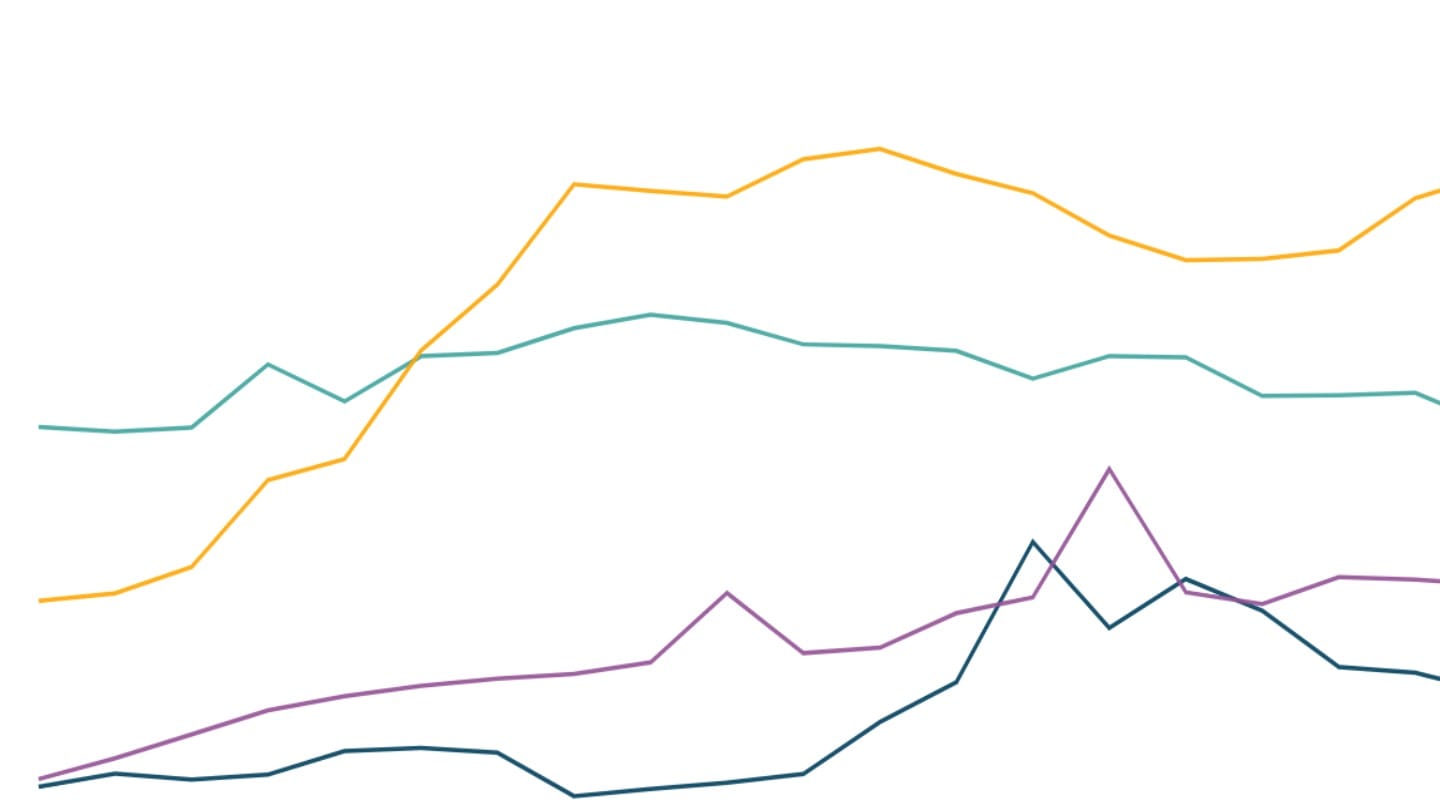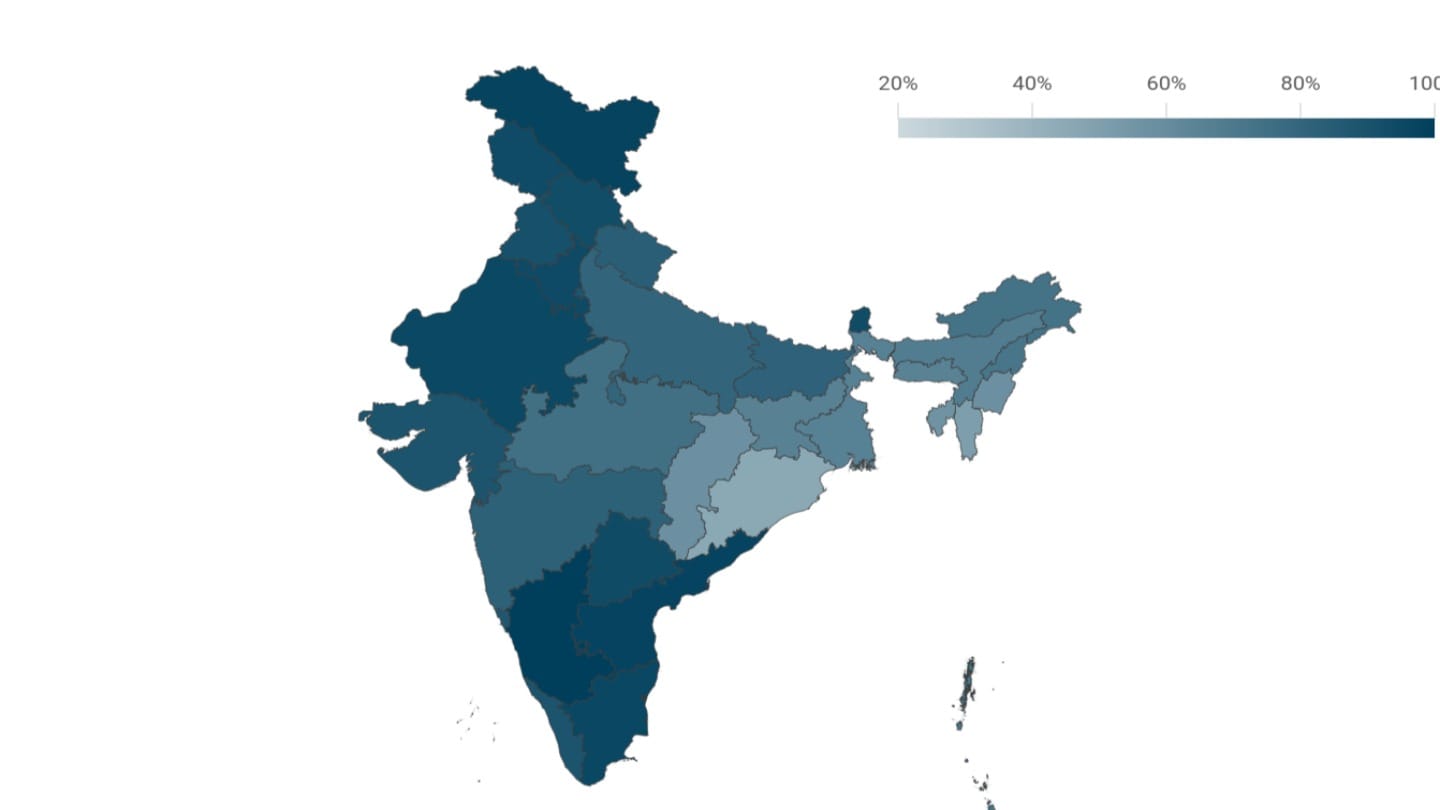Vehicle ownership in India
Two-wheeler ownership has become more widespread in India, but car ownership is relatively low and concentrated among some groups
There are around 260 million two-wheelers and 50 million cars on Indian roads[1]. Relative to the country's population, there are 185 two-wheelers and 34 cars for every 1000 people in the country[2].
Globally, while India has one of the lowest number of registered cars per 1000 people, the population-adjusted number of two-wheelers is one of the highest in the world[3].
Advanced economies such as Germany and the UK generally have more cars relative to the population, as compared to two-wheelers. But emerging economies show both, where South Africa and Brazil have more prevalence of cars, while India and Sri Lanka have a high prevalence of two-wheelers.
Household ownership
But some Indian households may own multiple cars, while some may not own any at all.
Household surveys, as compared to data on registered vehicles, provide a better picture of what a family owns. Nationally representative surveys such as the Household Consumption Expenditure Survey (HCES) conducted by the National Statistics Office (NSO), as well as the National Family Health Survey (NFHS), record whether households own some key assets, including vehicles, refrigerators and home appliances.[4]
The HCES records ownership of three kinds of vehicles: cars and jeeps (referred to as cars here[5]), motorcycles and scooters (referred to as two-wheelers), and bicycles.
The recent HCES finds that more than half of households owned a motorcycle or a scooter. But fewer than one in ten households owned a car or a jeep in 2023[6].
Regional variations
Among India's larger states, more than 70% of households in richer states such as Gujarat and Tamil Nadu have two-wheelers, while household two-wheeler ownership is lower in the relatively poorer eastern states.
Car ownership is similarly low in central and eastern India, but is the highest in richer states[7].
Vehicle ownership by economic class
The HCES also collects per capita consumption expenditure data (monthly spending on all items). We create five economic classes, or quintiles, based on their monthly per capita consumption expenditure, by arranging the population in the increasing order of consumption expenditure and creating boundaries at the 20th, 40th, 60th and 80th percentiles. The group of people from the first to the 20th percentile becomes the first quintile, that from the 20th to the 40th percentile becomes the second quintile, and so on. The first quintile is also referred to as the lowest quintile, or the poorest quintile, or the poorest 20% of the population. The fifth quintile is also known as the highest quintile that represents the richest 20% of the population by consumption expenditure.
Even though people in the richest quintile are twice as likely to own two-wheelers as those in the poorest quintile, two-wheeler ownership is much more broad-based than car ownership in India.
The pattern of car ownership is starkly different. It is negligible among the lowest quintiles of the population by MPCE. Even in the richest quintile, only 10% of households in rural areas own a car. One fourth of the richest urban households on the other hand own a car.
While car and two-wheeler ownership rise with rising levels of consumer spending, the pattern of ownership of bicycles is the opposite. The poorest households are twice as likely to own cycles as the richest households.
Progress over time
Household ownership of two-wheelers has accelerated over the last two decades. The recent growth has been more pronounced in the rural areas than in urban areas. In absolute terms, about 170 million households have a two-wheeler in India[8].
Car ownership, in contrast to two-wheelers, is rising at a relatively slower pace. The extent of ownership was close to nil at the turn of the century in rural areas, and about 3% in urban areas. At 4% in rural areas currently, it roughly translates to about 8 million households owning cars in rural India[9]. Similar calculations for urban areas suggest that around 15 million urban households own cars.
A little less than half of India's households own a bicycle. While car and two-wheeler ownership is rising in India and has never fallen over time, bicycle ownership, which was rising until the 2000s, has fallen over the last decade or two.
The share of households owning cars and two-wheelers is higher in urban areas than rural. Bicycle ownership is more popular, on the other hand, in the rural parts of the country.
In rural areas, household ownership of two-wheelers has grown across economic classes, but car ownership, which is very low compared to two-wheelers, has grown noticeably only for the richest 20% of the population.
Bicycle ownership peaked in the 2000s and has fallen since across the socioeconomic spectrum, except among the poorest fifth of the population.
[1] Annual report of the Ministry of Road Transport and Highways, 2023-24. The Ministry compiles these statistics based on the data on vehicle registrations reported by regional transport offices.
[2] Since there has been no Census since 2011, we use population projections made by the Registrar General and Census Commissioner of India
[3] World Road Statistics, International Road Federation. Here, India is ranked 99th in a list of 115 countries in population-adjusted car registrations, while 11th in a list of 111 countries in terms of two-wheelers. Data for many Asian countries such as Thailand and Vietnam, where two-wheelers are the preferred choice for personal transport, is not available in the original source. India's data in this chart pertains to the year 2020.
[4] The recent rounds of HCES record only whether the household owns household durable goods including home appliances, furniture, and vehicles. So the survey records whether a household owns a car or not, and not how many cars the household owns.
[5] The HCES asks about the possession of cars and jeeps in a single question. However most four-wheelers are likely to be cars. According to administrative data from the Ministry of Road Transport and Highways, jeeps form 6% of the number of registered cars and jeeps together.
[6] The NFHS, conducted between 2019 and 2021, shows similar ratios for car and two-wheeler ownership at the aggregate national level.
[7] Data pertaining to smaller states are to be used with caution due to the possibility of sampling errors due to insufficient sample among other reasons.
[8] The estimated number of households during the period of HCES 2023 is obtained from the population projections made by the Registrar General and Census Commissioner of India. The population presented there is divided by the average household size in rural and urban areas as obtained from HCES 2023.
[9] The estimated number of households during the period of HCES 2023 is obtained from the population projections made by the Registrar General and Census Commissioner of India. The population presented there is divided by the average household size in rural and urban areas as obtained from HCES 2023.




